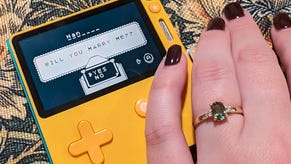PS3 in spring 2006?
PS3 chips on the way, while PS2 chips continue to get smaller.
SCE's chief technology officer has revealed that mass production of the Cell microprocessor is due to begin in the second half of 2005, a timescale which hints at a spring 2006 launch for the PlayStation 3.
Speaking to an industry event about Sony's semiconductor activities - including a new revision of the integrated PS2 chipset which is half the size of the original chip - Kenshi Manabe said that a pilot production line for Cell was set to be installed shortly.
Sony's Cell manufacturing will be carried out at a new fabrication plant in Nagasaki Prefecture, and early volumes of the chip are destined to end up in the PlayStation 3 - a device which will use up to eight Cell microprocessors in parallel.
The new timetable for Cell should silence critics of Sony's ambitious technology plans for the PS3, some of whom had predicted that the next-generation console could be delayed until 2007 by the difficulties of ramping up manufacture of the complex new CPU at its core.
If mass-production of the device goes ahead by late 2005, however, the console is likely to be on track for a spring 2006 launch in Japan - or possibly even a limited pre-Christmas launch, albeit with small volumes available at retail. A global launch would be expected to follow later in the year, possibly in autumn 2006 in the USA and Europe.
Sony is spending about €1.6 billion on producing Cell - a massive investment in new technology, but then again this is a company which has never exactly skimped on R&D costs. Indeed, it is thought to have spent some €2.3 billion on the research which has allowed it to shrink the size of the PS2 chipset by some 80 per cent since its introduction in 1999, thus massively reducing its costs in producing the chips and enabling easy integration of PS2 technology into new consumer devices like the PSX.
Manabe-san's comments about the Cell were made in a speech unveiling the latest stage in that process - a new 90 nanometre production process for the PS2 chipset (which now integrates the central CPU (Emotion Engine) and the graphics unit (Graphics Synthesizer) onto one chip), giving circuitry half the size of the company's original 180 nanometre chips.







